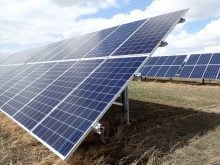Humans and plants have a beneficial relationship: we breathe out carbon, which through photosynthesis, plants use for growth and in this process they emit oxygen.
A plant in the shade may or may not have a reduced rate of photosynthesis, depending on numerous factors.
But if plants photosynthesize less in the shade, does that mean they also grow less or have lower yields? And if this is true, is the opposite true also? Could plants be created that have higher rates of photosynthesis to improve growth and yield?
Read Also

Farmer ownership cannot be seen as a guarantee for success
It’s a powerful movement when people band together to form co-ops and credit unions, but member ownership is no guarantee of success.
The short answer is yes.
Increasing the ability of a plant to photosynthesize increases yield or growth. This has already been proven in soybean research conducted in the United States where soybeans were genetically modified to have higher rates of photosynthesis. These varieties had higher plant biomass, ranging from 14 to 21 percent. The average yield increase for the soybean varieties that were tested was 25 percent.
The discoveries from this research could have far-reaching impacts. The application of similar technology to other food crops beyond soybeans could increase yields of all the commonly consumed crops, fruits and vegetables. An increased yield could also mean that the genetically modified varieties may result in greater amounts of carbon sequestered. Of course, this needs further investigation and will depend on the crop type, but it could have environmental benefits.
If this technology was bred into staple crop varieties of food insecure countries, the higher yields could have significant beneficial impacts on the United Nations Sustainable Development Goals of reducing poverty, ending hunger and ensuring human health.
Reducing food insecurity in a substantial way is going to result from innovation. Ending conflict and other distribution problems will have marginal improvements; the solution lies in innovation.
It’s not as simple as increasing our crops’ rate of photosynthesis and we will have all these great benefits. Of course, that is the goal, but having worked in this area of research for decades, I am not naïve about the reality of science, policy, or consumer acceptance. It’s important to recognize that increasing a plant’s ability to photosynthesize and potentially increase yields will impact its environment. Increased photosynthesis will also require increased water intake and soil nutrients. This will have some impact on ecosystems, such as water, soil, and soil microbes and organisms. Further research is needed to better understand these relationships.
Depending on what the research findings are, the crop type, and the nation, these crops could be a few years to a few decades away. Consumer acceptance will play a role in the success of this technology’s development and adoption. If this is something you think is of value, let your politicians know.
We can easily see these GM technologies being transferred to ornamental crops, which might have a higher consumer acceptance because they are planted in our yards and are not in our food systems.
If a person could plant a rose bush or tulip bulb that would sequester more carbon, would consumers view this technology more favourably? Or if your tomato or cucumber plants could sequester more carbon and have higher yields, would this alter their perspectives on biotechnology in food? If so, just don’t put it in zucchini. We never need more zucchini.
Stuart Smyth is an associate professor in the Department of Agricultural and Resource Economics at the University of Saskatchewan. He holds the Agri-Food Innovation and Sustainability Enhancement Chair. The article first appeared on the SAIFood website. It has been edited for length.















